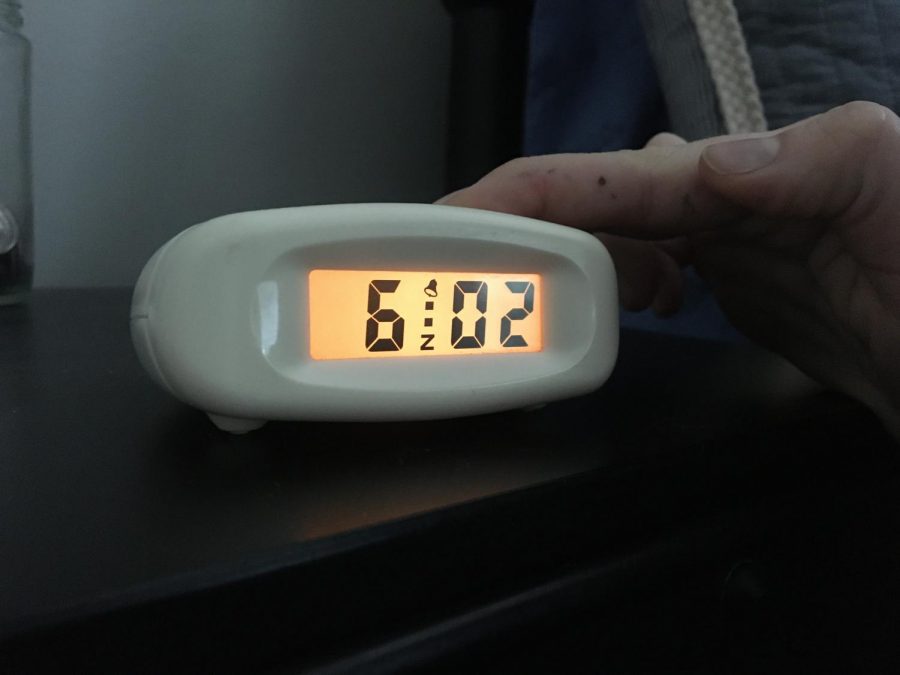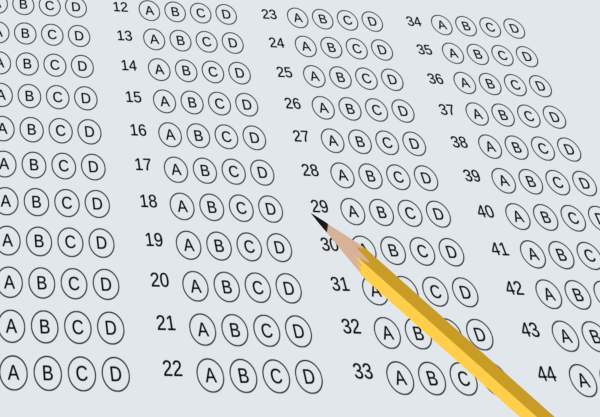Schools must push back start times to end student sleep deprivation
Many students wake up as early as 6 a.m. on weekdays in order to get to school on time.
February 26, 2020
Every weekday morning, high schoolers are met with the dreaded sound of a ringing alarm. Ripped from their sleep, feeling exhausted and groggy, they make their way to school without adequate sleep. Sleep deprivation in students could easily be fixed by pushing back school start times.
Nearly every high schooler is familiar with the term “sleep deprivation.” Sleep deprivation is defined as not obtaining an adequate amount of sleep. According to the American Academy of Pediatrics (AAP), the optimal range of sleep for teenagers is 8 to 10 hours per night. However, teens just aren’t getting this amount of sleep. A study done by the APP across 30 states in 2018 found that 73 percent of high school students in the U.S. were getting less than 8.5 hours a night.
There are several reasons for widespread sleep deprivation. When teenagers reach adolescence, their circadian rhythm, a natural and internal process that regulates the sleep-wake cycle, is dramatically altered. Melatonin is a hormone that regulates sleep, and while adults and children begin to release melatonin around 9 p.m., teenage bodies begin to release it 2 hours later, around 11 p.m. This naturally causes them to go to sleep later. Furthermore, hefty amounts of school work, combined with after-school activities or part-time jobs, force teens to stay up later than 11 p.m.
To get the recommended 8 hours of sleep, teenagers would have to sleep until 7 a.m., which for some teens, isn’t a possibility on school days. Early school start times, early bus route pick-ups, and before-school activities all impair the ability to get the amount of sleep needed to function. Even more so, while 8 hours of sleep is adequate, it’s the absolute bare minimum. Teens would be barely getting the amount of sleep needed.
Sleep deprivation isn’t something to take lightly, either. In a study of nearly 28,000 high school students in 2014 by the Journal of Youth and Adolescence, researchers found that each hour of sleep lost was associated with a 38 percent increase in feeling sad or hopeless, and a 58 percent increase in suicide attempts. Additionally, chronic sleep loss is linked to obesity, trouble concentrating and weakened immunity.
For teenagers, adequate sleep could be obtainable by implementing later school start times. The AAP recommends that high schools start no earlier than 8:30 a.m. While Grady has an 8:30 a.m start time, once again, this is a bare minimum. To maximize the benefits adequate sleep brings, start times should be pushed back later. Wendy Troxel, the Senior Behavioral Behaviorist and Social Scientist at RAND Corporation, found that in one school district, a later start time increased attendance by 25 percent. In another district, there was a 70 percent reduction in car crash rates.
Increasing the start time for high schools does pose logistical issues, such as changing bus route times and leaving students with less time for after-school extracurriculars. This could make it harder for students with parents who work full-time to get to and from school. However, the benefits of later start times and adequate amounts of sleep outweigh the negatives. If the community worked with the school to find efficient transportation and improve bus routes, a solution to this problem could be found. Higher attendance, better mental and physical health, and a better academic record all prove the worth of sleep. Teenagers can’t change the fact that they go to bed late, but we can change what time they have to get up.













